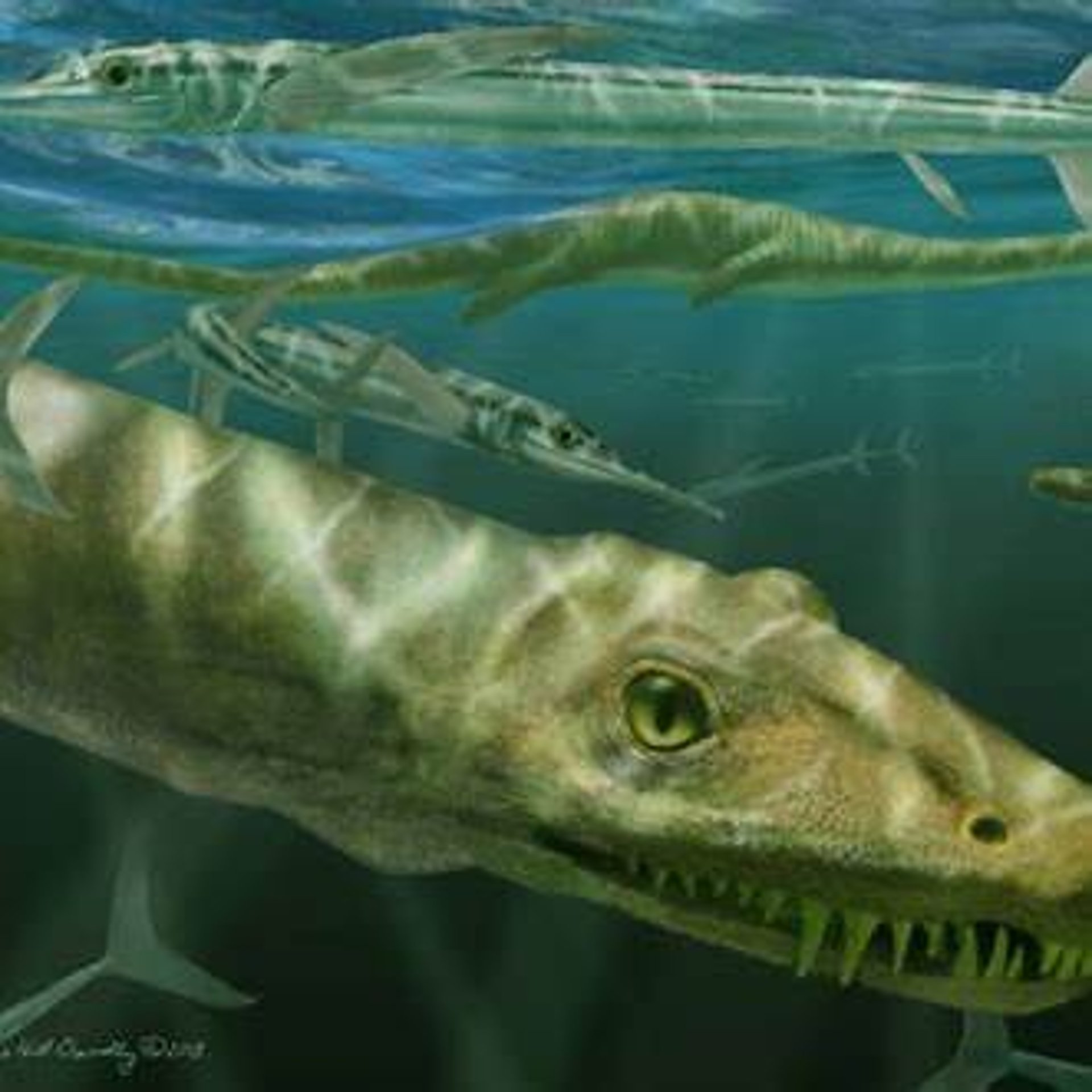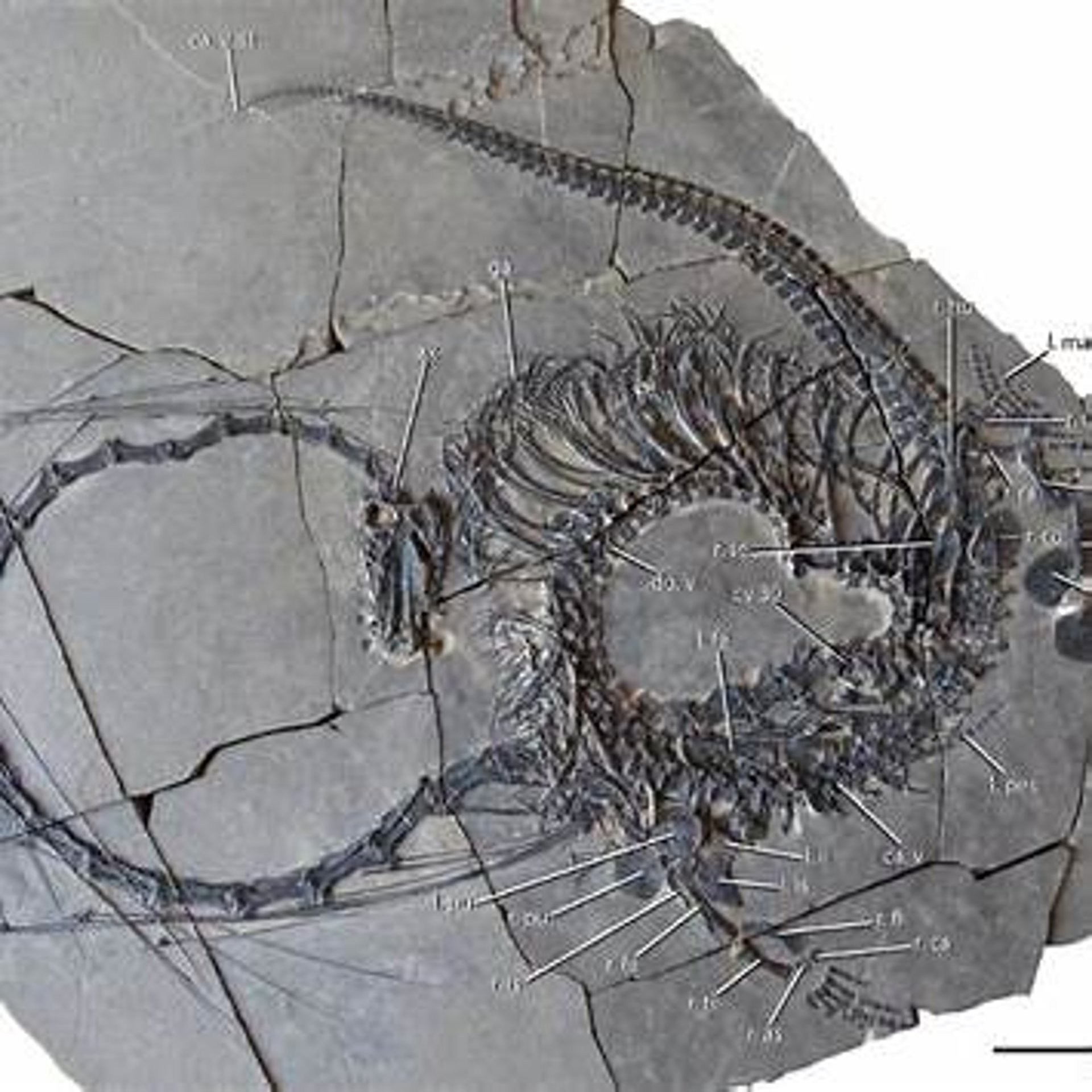240-Million-Year-Old 'Dragon' Fossil Unearthed: Meet Dinocephalosaurus orientalis
240-Million-Year-Old 'Dragon' Fossil Unearthed: Meet Dinocephalosaurus orientalis
Sandeep gawdiya
4/26/20254 min read
🐉 240-Million-Year-Old 'Dragon' Fossil Unearthed: Meet Dinocephalosaurus orientalis
In a truly remarkable discovery, scientists in southern China have unearthed a fossil that feels pulled straight from ancient myth.
Found in Guizhou Province, this beautifully preserved fossil belonged to a marine reptile whose long, snake-like body and dramatically extended neck closely resemble the legendary Chinese dragon.
The creature, known as Dinocephalosaurus orientalis, lived about 240 million years ago during the Triassic period.
Although the species was first identified in 2003, this newly discovered fossil is the most complete specimen ever found, stretching roughly 16 feet (5 meters) in length.
For paleontologists, it offers an unprecedented view of the animal’s full body shape, structure, and adaptations, giving a clearer picture of one of the Triassic seas’ most fascinating predators.
🦕 Special Features of Dinocephalosaurus orientalis
Unlike other long-necked marine reptiles that simply stretched their neck bones, Dinocephalosaurus evolved differently: it grew extra vertebrae, extending its neck through a unique structural adaptation.
This allowed the creature to have an extremely flexible, elongated neck — perfect for swimming and striking at prey in the water.
Thanks to this new fossil, researchers can now better understand how Dinocephalosaurus moved, hunted, and thrived in its aquatic environment.
Its long, slender neck would have helped it catch fish and smaller sea creatures by quickly darting forward with precision.
🌊 A Peek Into Ancient Ocean Life
The discovery doesn't just teach us about one creature — it gives a broader glimpse into life during the Triassic period.
With its distinctive body, Dinocephalosaurus likely hunted in ways completely unlike anything we see among modern marine animals.
Its unique features reveal just how diverse and unusual life was 240 million years ago.
In fact, in 2021, scientists placed Dinocephalosaurus in its very own family, Dinocephalosauridae, separating it from similar-looking creatures like Pectodens.
This move highlights its one-of-a-kind evolutionary path and further confirms how different it was from other reptiles of its time.
🌟 A Rare, Once-in-a-Generation Discovery
Finding a fossil as complete and well-preserved as this is considered a once-in-a-generation event for paleontologists.
It offers priceless information about how marine reptiles evolved during the Triassic era and provides scientists with new clues about the ecosystems of ancient oceans.
The level of detail in the fossil allows researchers to study everything from the creature’s hunting techniques to its swimming style — and even how its body was perfectly adapted for life underwater.
❓ FAQ
What is the significance of the 240-million-year-old "dragon" fossil found in China?
This fossil provides an unprecedented view into the body structure, lifestyle, and evolutionary history of a rare ancient marine reptile, expanding our knowledge of life during the Triassic period.
How does the Dinocephalosaurus differ from other marine reptiles?
Unlike others that stretched their neck bones, Dinocephalosaurus grew extra vertebrae, giving it a longer, highly flexible neck that set it apart from its marine contemporaries.
Why is the new fossil find so important for paleontologists?
It is the most complete Dinocephalosaurus fossil ever found. Its discovery opens a new chapter in understanding prehistoric marine life and evolutionary biology.
What was the role of Dinocephalosaurus in the Triassic period?
Dinocephalosaurus was a skilled predator, using its long neck and sharp teeth to catch smaller marine creatures. It played an important role in the ancient marine ecosystem.
🐉 A Major Breakthrough in Understanding Dinocephalosaurus
Although the species was first named by scientist Li in 2003, this latest discovery marks a major leap forward.
For the first time, scientists have a full, clear picture of Dinocephalosaurus' size, shape, and special adaptations.
Its dramatic resemblance to Chinese dragons links the discovery not just to science but also to cultural symbolism — making it a find that captures both scientific and public imagination.
🦕 The Anatomy and Evolution of Dinocephalosaurus
The new fossil revealed that Dinocephalosaurus didn’t just stretch its existing bones; it grew additional vertebrae, creating a neck far longer and more flexible than that of any comparable marine reptiles.
This flexible neck likely helped it to strike at prey with remarkable precision, giving it a major advantage in the ancient oceans.
The discovery deepens understanding of how Triassic marine reptiles evolved — and shows just how inventive nature could be in creating new forms of life.
🐉 A Discovery That Captures the Imagination
Nick Fraser, head of the National Museum of Scotland’s Department of Natural Sciences, expressed his fascination with the find, saying:
"This discovery allows us to see this remarkable long-necked animal in full for the very first time. It is yet one more example of the weird and wonderful world of the Triassic that continues to baffle palaeontologists. We are certain that it will capture imaginations across the globe due to its striking appearance, reminiscent of the long and snake-like, mythical Chinese dragon."
Fraser’s comments highlight the extraordinary nature of the fossil — not only as a scientific marvel but also as a bridge connecting prehistoric life to human myth and culture.
🌎 The Global Team Behind the Discovery
This remarkable find was the result of a major international collaboration involving scientists from China, the United States, the United Kingdom, and Europe.
Professor Li Chun, from the Institute of Vertebrate Paleontology and Paleoanthropology, praised the teamwork, noting:
"Among all of the extraordinary finds we have made in the Triassic of Guizhou Province, Dinocephalosaurus probably stands out as the most remarkable."
Thanks to the global cooperation and the fossil’s excellent preservation, scientists now have a much better understanding of this spectacular reptile and its world.
🐟 Feeding and Behavior: How Dinocephalosaurus Lived
Dinocephalosaurus likely used its long, flexible neck to catch prey like fish with its sharp teeth.
Some scientists believe it may also have used suction feeding — pulling prey into its mouth — although that idea is still debated.
Its flipper-like limbs show it was fully adapted to life in the water but likely moved poorly on land.
Fish remains found in its stomach confirm that it was a highly specialized and successful marine predator, perfectly built for hunting in the ancient oceans.
🌟 Final Thought
The discovery of Dinocephalosaurus orientalis offers a stunning glimpse into a world that existed long before humans — a world filled with strange, beautiful creatures whose stories are just beginning to unfold.
This remarkable fossil not only changes what we know about ancient marine life but also reminds us of the awe-inspiring diversity that once filled Earth’s oceans.


Updates
Delivering timely news and inspiring life stories.
Links
Contact
+917976343438
© 2025. All rights reserved.
